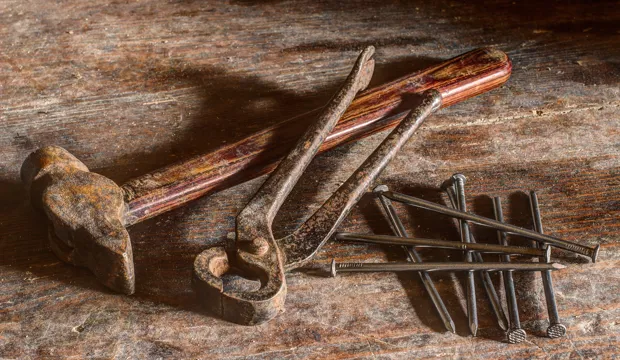
Seesaw scales
Understanding levers and forces
This STEM activity aims to develop children’s understanding of levers, specifically the seesaw class lever, one of the simplest forms of machine used to change the magnitude or direction of a force.
Making a small seesaw model is a fun-filled way to introduce children to the concepts of levers and forces. By making simple levers, learners will grasp how the effort applied to a lever affects the load. This hands-on project not only sparks their curiosity but also encourages active learning.
We've created this seesaw scale activity to support the teaching of key topics within design and technology (D&T), maths, and science as part of the primary national curriculum at key stage 2 (KS2). You can use it as a one-off activity or link it with a measurement activity in food technology.
Activity: Making the lever
Learners will make a simple lever assembly from a binder clip, ruler, two paper cups and sticky tape. Children will also be asked to use a lever to work out the force required to move a load.
Learners will compare results and explain their findings. Depending on available resources, this activity could be carried out individually or in small teams.
By the end of this activity, students will have a firm grasp of the answer to “What is a lever?”. They will have experienced first-hand a fun and educational seesaw lever example.
Tools/supplies needed:
- Rulers
- Large binder clips
- Paper cups
- Sticky tape
- Weights such as steel nuts, small weights from science or marbles
Follow our step-by-step guide on making the Lever:
As part of our seesaw scales activity, learners will be tasked with making a simple lever using sticky tape to hold the binder clip and cup in place.
Learners manufacture a simple lever arrangement, as shown in the presentation for this activity:
- A binder clip (opened out) is used as the fulcrum. This should be attached to the desk surface using sticky tape to stop it moving.
- A ruler is used as the beam.
- Paper cups should be attached to each end of the ruler using sticky tape.
- Learners put different weights in the two cups. They then move the ruler along the fulcrum until it balances, noting the distance from the fulcrum to each cup.
- Learners should record the results in a table and compare results and explain findings.
The engineering context
Engineers use their understanding of how the effort applied to a lever affects the load in designing a wide range of products. From weighing scales to control pedals in cars, nutcrackers, wheelbarrows, bottle openers, and scissors, levers find their application across various industries. By understanding the seesaw lever class, learners will gain a fundamental insight into the principles that govern these everyday objects.
Suggested learning outcomes
Through this activity, learners will gain the ability to identify the parts of a lever and understand how the effort applied to a lever affects the load. They'll also understand the principle of balance in a seesaw lever and how distance from the fulcrum impacts the effort needed to move a load. This will equip them with the foundational knowledge about levers, a key component in KS2 science, and provide a practical context for understanding mathematical concepts like multiplication and equality.
Download our activity sheet and other teaching resources
All activity sheets and supporting resources are free to download, and all the documents are fully editable, so that you can tailor them to your students’ and your schools’ needs.
The activity sheet includes teachers’ notes, useful web links, and links (where appropriate) to the national curriculum in each of the four devolved nations; England, Northern Ireland, Scotland and Wales.
You can download our step-by-step instructions below as either a classroom lesson plan or PowerPoint presentation.
Please do share your highlights with us @IETeducation.





